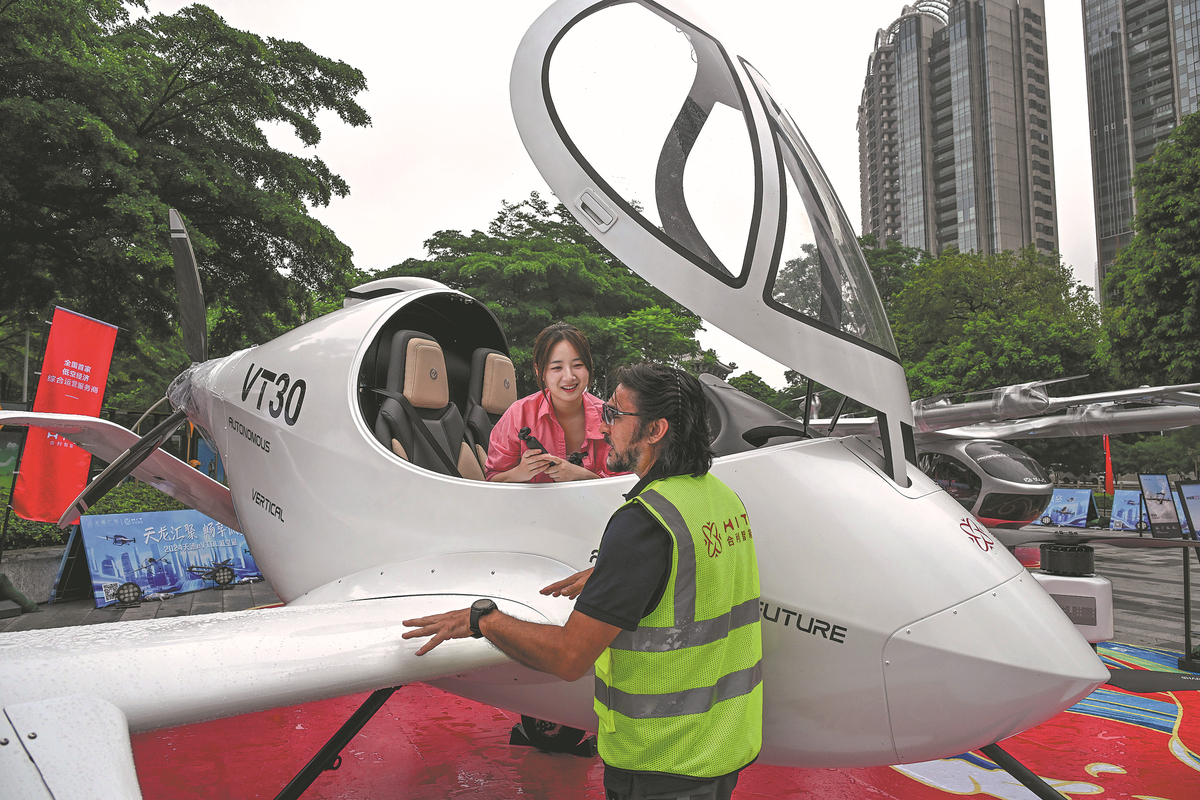Low-altitude economy hitting new heights


As the low-altitude economy gains traction nationwide, local governments across China are exploring region-specific ways to leverage their unique strengths and create their own industry clusters.
Beijing recently unveiled a plan for promoting high-quality development of the low-altitude economy, outlining its vision to nurture such a sector as a key growth driver of coordinated development of Beijing, Tianjin and Hebei province.
The capital city aims to become a hub for innovation in the low-altitude economy and a national demonstration zone for the sector. The action plan also sets forth a series of quantifiable goals, including the ambition to foster over 5,000 related enterprises within three years, which will contribute to over 100 billion yuan ($13.8 billion) of economic activity in the city.
Shenzhen, Guangdong province, became the first city nationwide to introduce a comprehensive low-altitude economy law earlier this year. This landmark legislation provides legal support for the development of the sector and positions the high-tech port city at the forefront of this high-potential area.
Data from the municipal government showed that the annual output of Shenzhen's low-altitude economy exceeded 90 billion yuan in 2023, a year-on-year increase of 20 percent. Moreover, Shenzhen ranked first in the country in terms of flight scale, launching 126 low-altitude routes and constructing 89 drone takeoff and landing sites as of the end of last year.
According to a report jointly released by National Business Daily and Zhejiang province-based big data platform Hsmap in late May, Beijing and Shenzhen have emerged as the leading cities in the low-altitude economy in China in terms of enterprise distribution, financing status, innovation resources and development environment.
While Beijing boasts significant advantages in science and technology resources for innovation, Shenzhen has gradually formed an industrial ecosystem by capitalizing on its favorable development environment, said Yang Hongfei, CEO of Hsmap.
Recognizing the tremendous potential of the low-altitude economy, in addition to Beijing and Shenzhen, various provinces such as Anhui, Sichuan, Jiangsu, Liaoning and Hubei have been actively formulating strategies and policies to tap into this emerging industry.
As localities across China compete to establish themselves in the low-altitude economy, it is important to recognize that not every location possesses the necessary industrial foundations and supporting infrastructure, said Wang Guowen, director of the center for logistics and supply chain management at the China Development Institute, a think tank based in Shenzhen.
Development of the low-altitude economy requires cities to have a strong foundation in science and technology industries, a robust manufacturing sector and a variety of application scenarios supported by favorable policies. Cities must also identify their unique advantages and position themselves accordingly to thrive in this rapidly evolving sector, Wang said.
The low-altitude economy encompasses a wide range of applications, including but not limited to aerial photography, delivery services, surveying and mapping, agriculture and emergency responses.
However, there is still untapped potential for expanding its scope of applications and creating more innovative scenarios, said Qin Rui, a professor at the Civil Aviation University of China.
Rather than starting from scratch, cities can focus on developing new use cases, and attracting and integrating established upstream businesses into their local ecosystems, Qin said.
Wuxi, Jiangsu province, which does not have a strong industrial chain in the low-altitude economy sector, has adopted an innovative approach by treating the entire city as a vast repository of potential scenarios that can interact with relevant activities.
By embracing open scenarios and exploring potential applications, Wuxi will build a low-altitude economy industrial base and operations headquarters for EHang Holdings Ltd, a Chinese urban air mobility technology company — the first electric vertical takeoff and landing aircraft project in Jiangsu.
Rather than attempting to replicate the successes of early-adopter cities, these cities are focusing on identifying their unique competitive advantages and building upon them to carve out a strategic niche in the sector, Qin said.




































